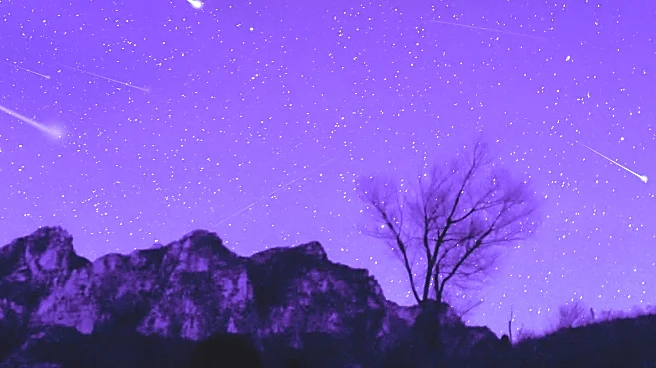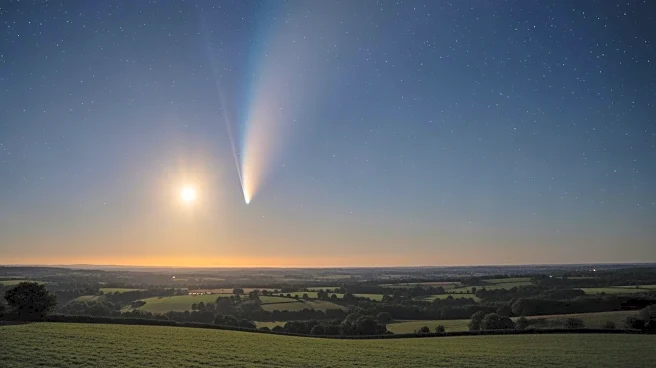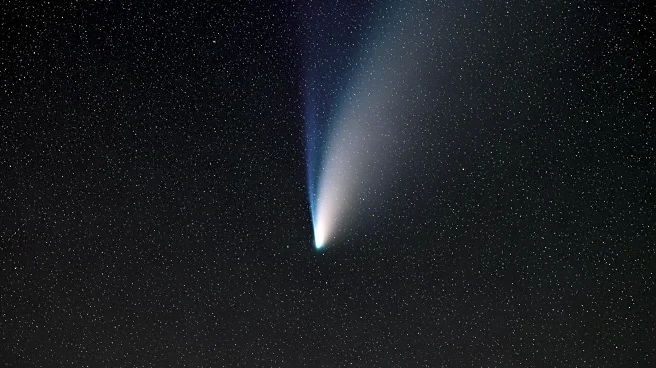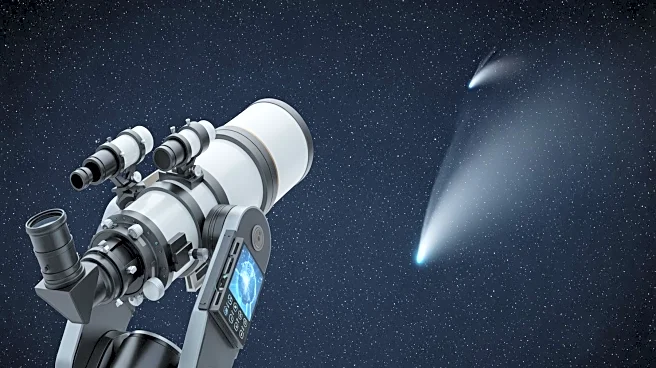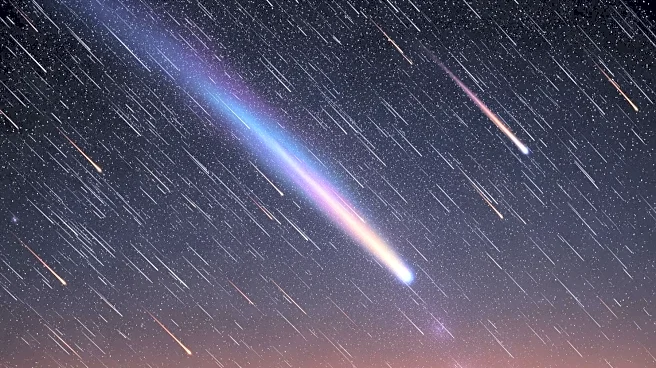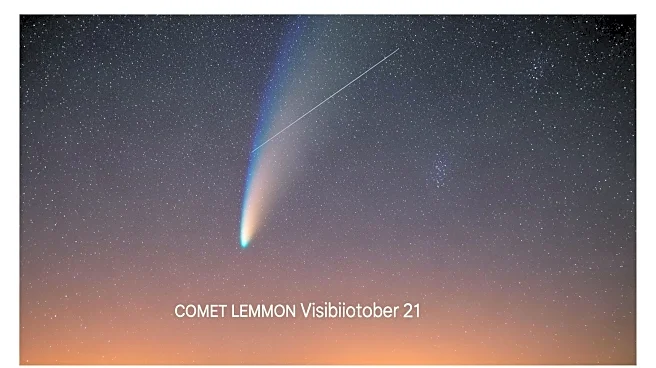What's Happening?
The Pacific Northwest is experiencing a celestial event with the Orionid meteor shower peaking alongside the visibility of Comet Lemmon. The Orionids, known for their brightness and speed, are visible
as they travel at 41 miles per second into Earth's atmosphere, leaving glowing trails. Comet Lemmon, passing closest to Earth at 56 million miles, is visible in the northwest sky. Weather conditions in Oregon and Washington may affect visibility, but the event offers a rare opportunity to witness these cosmic phenomena.
Why It's Important?
The simultaneous occurrence of the Orionid meteor shower and Comet Lemmon provides a unique opportunity for astronomers and enthusiasts to observe and study these celestial events. The visibility of these phenomena can enhance public interest in astronomy and science, encouraging educational activities and community engagement. The event also highlights the importance of clear skies and favorable weather conditions for astronomical observations.
What's Next?
As the meteor shower continues through November 12, enthusiasts can expect more opportunities to observe the Orionids. Comet Lemmon's visibility may vary based on weather conditions, prompting observers to plan viewing sessions accordingly. The event may lead to increased interest in astronomy-related activities and discussions about future celestial events.
Beyond the Headlines
The visibility of Comet Lemmon and the Orionid meteor shower underscores the interconnectedness of cosmic events and their impact on scientific exploration. These phenomena may inspire discussions on the role of astronomy in understanding the universe and the potential for future discoveries. The event also highlights the cultural significance of celestial observations and their ability to unite communities in shared experiences.
